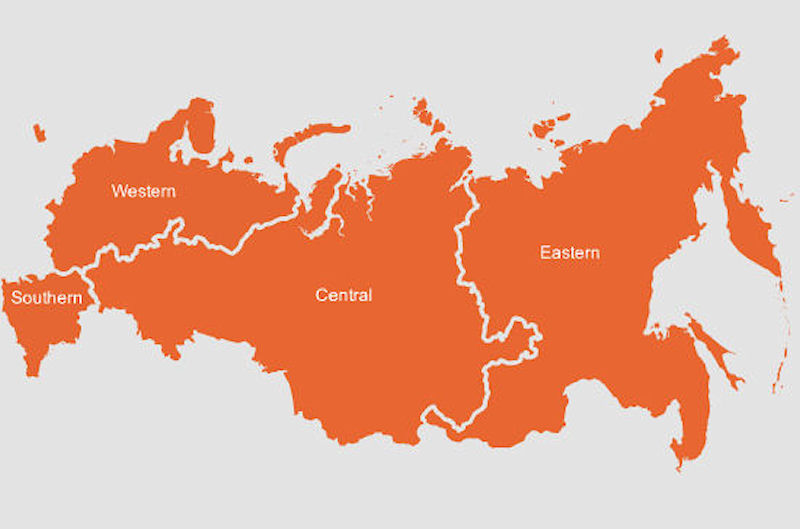TASS: Russia - Russian forces to practise use of S-300, S-400 against air, missile strikes
March 30, 11:38 UTC+3
The forces involved will be expected to repel a massive air and missile strike and destroy various targets simulating cruise and ballistic missiles, aircraft, and attack and reconnaissance drones
MOSCOW, March 30. /TASS/. Russian army units from seven regions in Russia’s east will practice the use of S-300 and S-400 air defense systems for repelling potential enemy’s massive missile and air strikes, the chief of the Eastern Military District’s press-service, Colonel Alexander Gordeyev, has said.
"Taking part in the exercise are air defense units, radio-technical forces, means of radio-electronic warfare, and reconnaissance and mechanized infantry troops deployed in Buryatia, Trans-Baikalia, Khabarovsk, the Primorye and Kamchatka territories and the Amur and Sakhalin regions," Gordeyev said.
The forces involved will be expected to repel a massive air and missile strike and destroy various targets simulating cruise and ballistic missiles, aircraft, and attack and reconnaissance drones.
"About 50 various targets will be used simultaneously," Gordeyev said.
The "enemy’ targets will be destroyed with S-300 missile launchers Favorit, S-400 Triumf, Buk, Osa, Tor and Strela-10 complexes, combined rocket and artillery complexes Tunguska and portable rockets Igla and Verba.
**************************
TASS: Russia - Russia's Orenburg Strategic Missile Forces unit undergoes comprehensive check
March 30, 13:05 UTC+3
The strategic missile unit is armed with Topol and Voyevoda missile
MOSCOW, March 30. /TASS/. The Orenburg branch of the Russian Strategic Missile Forces has begun a comprehensive check-up, the Defense Ministry’s spokesman for Strategic Missile Forces, Igor Yegorov, has told TASS.
"Under the strategic missile force training plan the Orenburg branch under Major-General Anatoly Kulai is to undergo a comprehensive check-up on March 30 through April 11. Strategic Missile Forces commander Colonel-General Sergey Karakayev is in charge," he said.
The main purpose of the exercise is to estimate the real state of affairs and combat readiness and check the commanders’ competence.
"The check-up will encompass the missile army’s control system, including its logistics center. Commanders’ organization skills, the quality of personnel’s combat training, skills and morale, observance of law, order and discipline, firearms handling skills and ability to cope with the tasks set will be scrutinized," Yegorov said.
The exercise is due on March 31 through April 4. Its chief task will be to "perfect performance by the headquarters of all levels and practical skills of the command staff, operative groups and units in view of a threat of a terrorist attack."
The Orenburg strategic missile unit is armed with Topol and Voyevoda missiles.
Russia Begins Large-Scale Air Defense Drills in Siberia / Sputnik International
Large-scale air defense drills have started in Russia's Eastern Military District, according to the Russian Defense Minister's press service.
The Russian Defense Minister's press service reported on Monday that large-scale air defense exercises have got under way in Russia's Eastern Military District.
"The drills are taking place at special firing ranges in the Primorye Territory and Buryatia, where the servicemen will be tasked with destroying about 50 various targets," the press service said.
"To implement the task, the troops will use a spate of the short-range surface-to-air missile systems, such as the Osa, the Tor and the Strela-10. Additionally, the drills will see the Tunguska self-propelled anti-aircraft missile system, the man-portable air defense systems Igla and Verba, as well as the new generation long-range air defense missile systems Triumf and Favorit," the press service said.
It added that during the war games, the troops will, in particular, drill the units in repelling a massive missile and air strike by a simulated enemy.
The press service declined to elaborate on the exact number of servicemen involved in the exercises, but said that they will see the participation of air defense, aviation, radio-radar, electronic warfare, reconnaissance and motor rifle units stationed in Buryatia and the Primorye Territory, as well as the Trans-Baikal, Khabarovsk, Kamchatka, Amur and Sakhalin regions.
.................
Military districts.






















